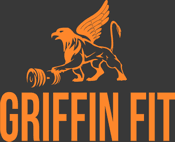Everything you need to know about creatine

Creatine is a naturally occurring substance that has gained a lot of popularity as a dietary supplement due to its numerous benefits. In this blog, we’ll explore how creatine works, the benefits of taking it, when you should take it, and what you can expect as a result.
How Creatine Works
Creatine is found in small amounts in the human body, as well as in certain food sources such as red meat and fish. It works by increasing the stores of phosphocreatine in the muscles, which in turn enhances the production of ATP, the body’s main energy source. This increase in energy levels allows the body to perform high-intensity, short-duration exercises more effectively.
Benefits of Creatine
1 – Increased Muscle Strength and Power: By improving the body’s ability to perform high-intensity, short-duration exercises, creatine can help increase muscle strength and power.
2 – Improved Muscle Mass: Creatine has been shown to increase the amount of lean muscle mass in the body by increasing the volume of water within the muscle cells, which in turn stimulates protein synthesis and growth.
3 – Enhanced Mental Performance: Creatine has been shown to have a positive impact on cognitive function, especially in tasks that require short-term memory and processing speed.
4 – Reduced Fatigue: Creatine has been shown to reduce fatigue and increase endurance during intense physical activity.
5 – Reduced Muscle Soreness: Creatine has been shown to reduce muscle soreness and improve recovery time after intense physical activity by reducing the production of lactic acid.
What to Expect as a Result of Taking Creatine
While everyone’s experience with creatine may be different, some common effects include increased muscle strength and power, improved muscle mass, enhanced mental performance, reduced fatigue, and reduced muscle soreness. It’s also common for some people to experience a slight increase in weight, as the supplement causes the body to retain more water.
Taking creatine alone will not necessarily make you “jacked,” as having a well-defined and muscular physique requires a combination of factors including proper nutrition, weightlifting, and adequate rest.
For optimal results, it’s recommended to follow these guidelines when taking creatine:
-
Loading Phase: During the first week of taking creatine, it’s recommended to consume 20-25 grams per day, split into 4-5 smaller doses throughout the day. This helps to quickly increase your muscle stores of creatine.
-
Maintenance Phase: After the loading phase, it’s recommended to consume 3-5 grams per day to maintain the increased muscle stores of creatine.
-
Timing: Creatine can be taken either before or after a workout. Some people find it helpful to take it immediately after a workout for recovery and muscle growth, while others prefer to take it with a meal for better absorption.
-
Consistency: To see the best results from creatine, it’s important to take it consistently over time, as it may take several weeks or even months of consistent use to see results. It’s important to note that individual results may vary and it may take several weeks or even months of consistent use to see results. It’s also always advisable to speak with a healthcare provider before starting any new supplement regimen.
Note: The loading phase is not strictly necessary for creatine, and many people choose to skip it and only take a maintenance dose of 3-5 grams per day. The loading phase is typically recommended for those who want to see results more quickly, as it helps to quickly increase the muscle stores of creatine.
However, the loading phase can also result in initial side effects such as bloating and digestive discomfort, so some people choose to avoid it. Ultimately, the choice to do a loading phase or not is a personal one, and there is no one “right” answer for everyone.
Which creatine is the best?
There are several different forms of creatine available, but the most commonly used and well-researched form is creatine monohydrate. This form of creatine has been shown to be effective and safe in numerous scientific studies.
Do you need to cycle creatine (de-loading phase)?
A creatine “de-loading” phase is not strictly necessary, as creatine is not a stimulant or a hormone, and there is no evidence that taking extended breaks from creatine is beneficial.
However, some people choose to take a break from creatine every few months to avoid a potential decrease in sensitivity to its effects. This is a personal choice, and there is no one “right” answer for everyone.
Creatine is a safe and effective supplement that provides numerous benefits to those who take it. Whether you’re an athlete looking to improve your performance, or simply someone looking to maintain a healthy lifestyle, creatine is a great choice for anyone looking to enhance their physical and mental well-being.
For more information on other supplements that you may find useful, checkout this link.
Thanks for reading
Michael
